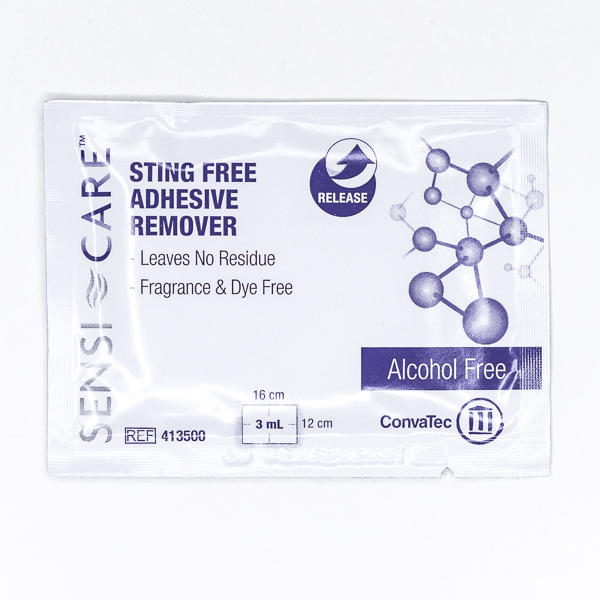Help! It itches! Do you have the following problem? The adhesive on your Freestyle Libre, Dexcom, Medtronic Enlite/Guardian, Eversense XL sensor, or insulin pump catheter suddenly triggers skin irritation or contact allergies. Your skin itches and burns after a while or a few days, or it becomes red after removing the glucose sensors and catheters. I'm Sonja from Zuckerschmuck, and I've been affected myself. In collaboration with other diabetics, we looked for solutions that have helped most of us use these wonderful diabetes aids again without any problems. Of course, we want to share these tips and tricks with you and have added the " Skin Protection " section to our Zuckerschmuck range so that we can help all Diabuddies suffering from itching:
Skin protection wipes and spray as a transparent barrier between skin and adhesive
Skin protection wipes (SKIN PREP, Skin Tac Adhesive Wipes, Sensi Care) or skin protection spray (SECURA, Sensi Care), as well as spray plasters (Hansaplast) are applied to cleansed, disinfected skin and, after approximately 20 seconds of drying time, form a transparent protective film on the skin. The glucose sensor or insulin pump catheter from Tandem t:slim, Medtronic, Dana, etc., is then inserted as usual and, if necessary, concealed with decorative tape. The protective film reliably prevents or minimizes itching and redness in most cases. 

Tape as a barrier plaster between skin and adhesive
For some of our affected customers, the following trick has been the ingenious solution to all skin allergies: A small hole is cut into our unaffected tapes (overpatches without a cutout/hole) in the center where the sensor thread is. The tape is then applied to the adhesive surface of the sensor, so that the tape  serves as a barrier between the sensor patch adhesive and the skin, allowing the sensor thread to penetrate the skin through the hole in the center. The sensor is then applied to the disinfected skin as usual, and the sensor thread is "shot" into the skin.
serves as a barrier between the sensor patch adhesive and the skin, allowing the sensor thread to penetrate the skin through the hole in the center. The sensor is then applied to the disinfected skin as usual, and the sensor thread is "shot" into the skin.
How do I gently remove adhesive residue without rubbing?
When a catheter or CGMS sensor is due to be replaced, unsightly adhesive residue from the old insulin pump catheter or sensor often remains on the skin. Here, too, we've thought about and conducted our own experiments to find the most gentle way to remove this residue without causing further redness due to unnecessary rubbing: Baby oil or olive oil helps some diabetics rub away the adhesive residue. However, it's even more gentle to use professional adhesive residue removers. We've searched for suitable tools for you and were impressed by the following products:  REMOVE adhesive residue remover wipe for gently removing adhesive residue from catheters and glucose sensors
REMOVE adhesive residue remover wipe for gently removing adhesive residue from catheters and glucose sensors  Sensi Care Plaster Adhesive Remover Wipe for gently removing adhesive residue from insulin pump catheters and diabetes CGMS sensors
Sensi Care Plaster Adhesive Remover Wipe for gently removing adhesive residue from insulin pump catheters and diabetes CGMS sensors  Sensi Care Plaster Adhesive Remover Spray for gently removing adhesive residue from insulin pump catheters and diabetes CGMS sensors
Sensi Care Plaster Adhesive Remover Spray for gently removing adhesive residue from insulin pump catheters and diabetes CGMS sensors
What can I do about mild skin redness?
If, despite all precautions, mild skin irritation occurs after catheter or sensor changes in hot weather or during exercise, we recommend zinc ointment for rapid healing of reddened skin areas. This is also ideal for minor abrasions and injuries outside of diabetes:  Abtei Wundheil zinc ointment for skin redness after insulin pumps and catheter changes
Abtei Wundheil zinc ointment for skin redness after insulin pumps and catheter changes  Scio Wound Healing Zinc Ointment for skin redness after insulin pumps and catheter changes. We hope our tips help you and help you have a carefree diabetes life! If you have any other tips and tricks that you would like to share with other diabetics, please write to us at info@zuckerschmuck.com and we'll be happy to share them on our Instagram and Facebook pages. Together we are stronger!
Scio Wound Healing Zinc Ointment for skin redness after insulin pumps and catheter changes. We hope our tips help you and help you have a carefree diabetes life! If you have any other tips and tricks that you would like to share with other diabetics, please write to us at info@zuckerschmuck.com and we'll be happy to share them on our Instagram and Facebook pages. Together we are stronger!
Your Sonja with the sugar jewelry team









